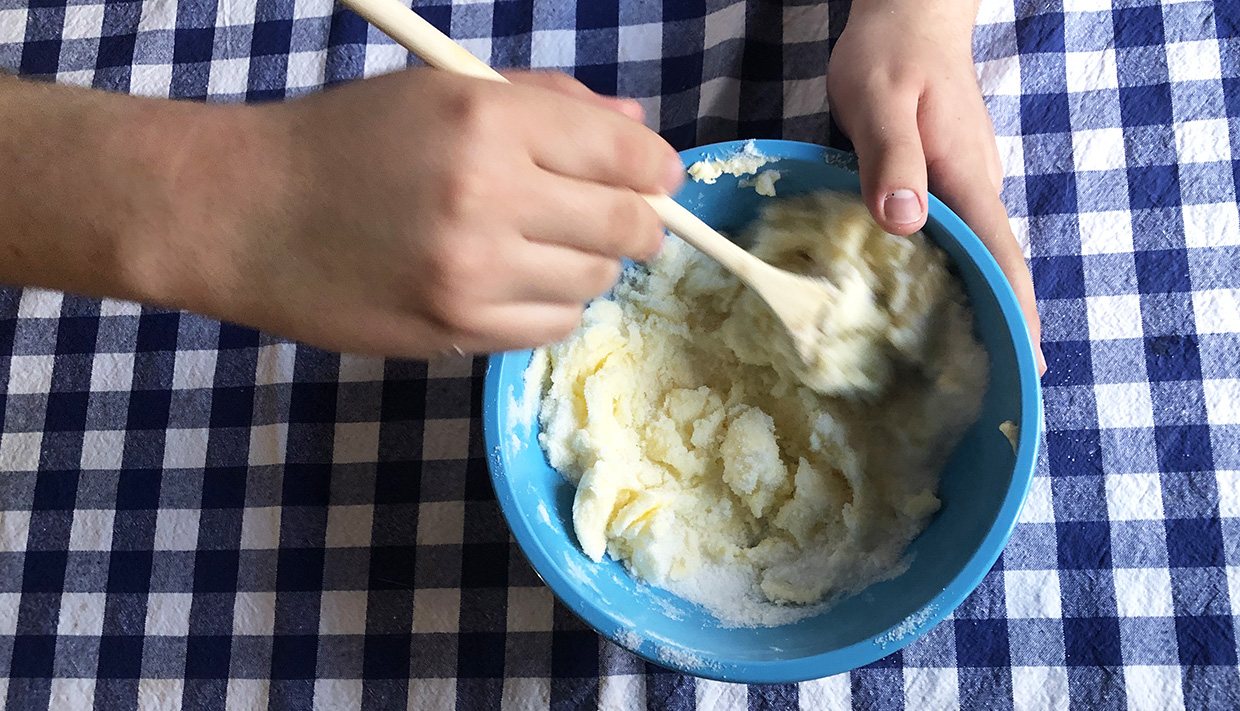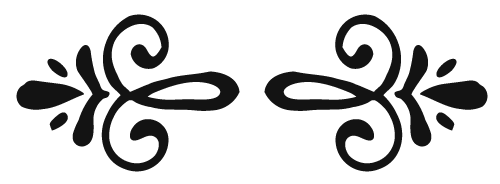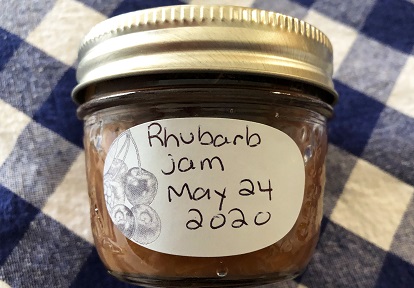NEW! We demonstrated this ‘cup cake’ recipe on Facebook Live! Follow along as Black Creek’s Victoria bakes a Victorian cake for Victoria Day.
“Cup cake is about as good as pound cake and is cheaper. One cup of butter, two cups of sugar, three cups of flour, and four eggs, well beat together, and baked in pans or cups. Bake twenty minutes, and no more.” – From The Frugal Housewife, by Mrs Lydia Marie Child, 1838.

This simple recipe is taken from an early Victorian cookbook, The Frugal Housewife. It can be challenging to work with older recipes: cookbook authors assumed home bakers knew all the basics, so instructions were brief. Don’t worry! We’ve filled in the detail for you.
Victorian ‘Cup Cake’ Tutorial
The cup cake recipe is an easy one for a beginner baker — no more challenging than making cake from a mix!
Prep time: 20 minutes
Cook time: 40 minutes
Serves: 8 to 10
A note for families: Because this recipe involves the use of an oven, always make sure kids have adult supervision in the kitchen.
Step 1: Gather your ingredients and supplies
Pre-heat the oven to 350 F.
You will need:
Supplies
- Mixing bowls
- 1 cup measuring cup
- A whisk or fork
- Wooden spoon
- Greased 8×8 cake pan (use a larger pan and reduce the baking time for a thinner cake)
Ingredients
- 1 cup of butter (at room temperature)
- 2 cups of sugar
- 3 cups of flour
- 4 eggs
Tip: Eggs in the 1860s didn’t come with expiry dates stamped on them. So how could people tell if eggs were fresh? LEARN THE SECRET!

Optional: This recipe makes a thick batter. If you want to thin it out, just add about a half cup of milk. For extra flavour, add a teaspoon of vanilla and a pinch of salt. Once the cake is baked and cooled, sprinkle with icing sugar if desired!
Step 2: Cream the butter and sugar
To cream butter and all you have to do is mix room-temperature butter with sugar until you have a somewhat smooth, thick paste.

Step 3: Add the eggs
In a separate bowl, crack the eggs and whisk until beaten.

Next, add the beaten eggs to the butter and sugar mixture, and stir with the wooden spoon until smooth.

Step 4: Add the flour
Add the flour to the wet ingredients and mix until just combined. Be careful not to overmix the batter!


Step 5: Bake it!
Grease your cake pan and pour in the batter.
Place the cake on a rack in the centre of the preheated oven, and bake for 35 to 40 minutes at 350 F. You will know it is done when the top of the cake is golden brown and a toothpick inserted into the centre of the cake comes out clean.
Note: The baking time may be less if the cake is baked in a larger pan.

Step 6: Time to eat!
Remove the cake from the oven and allow to cool before removing it from the pan. Sprinkle with icing sugar if you like. Enjoy!


Rising to the Occasion
Seasoned bakers may be wondering: Where is the baking powder?
Mrs. Child didn’t include baking powder in her recipe because it hadn’t been invented yet!
Baking powder was first created by a British chemist named Alfred Bird in 1843. His wife was allergic to yeast and eggs, and he wanted to find an alternative to make bread rise. He combined cream of tartar, baking soda, and starch to create a leavening agent that helped cakes to become light and fluffy and bread to rise quickly.
It wasn’t until the mid to late 1800s that baking powder became widely used in kitchen across Canada.
For a lighter touch, you can half-teaspoon of baking powder to the recipe above to make a taller, lighter cake.
 |
For More Victorian Culinary Adventures:







